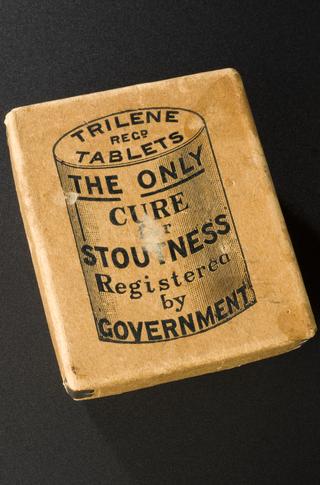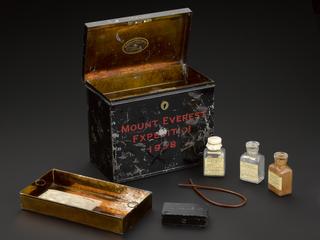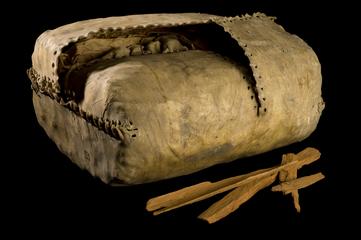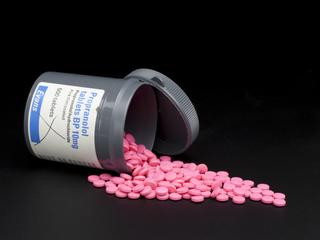
Bottle of sodium amytal pulvules
- Made:
- 1960-1975 in Basingstoke
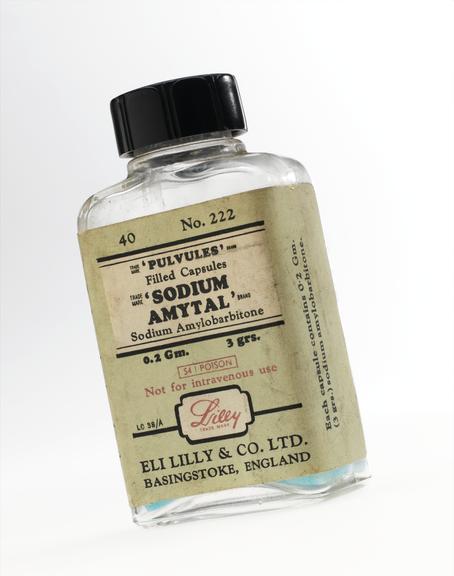
Glass bottle with plastic cap for 40 blue 'Sodium Amytal' (amobarbital) 'pulvules', with approximately 25 capsules remaining. 82 mm x 42 mm x 24 mm, .07kg. Made by Eli Lilly & Co., English, 1960-1970.
Sodium amytal is a strong sedative drug that is sometimes used to treat severe insomnia in patients who are already taking barbiturates – often for mental health problems.
It is a drug with a controversial history. It was used in the Second World War by some medics to send soldiers who were exhausted and traumatised by their experiences into a deep therapeutic sleep. However, it has also been described as a ‘truth serum’ and used during interrogations. Once a sedated, hypnotic state is induced, the subject is said to be more suggestible and less able to retain information they may wish to keep secret.
Details
- Category:
- Materia Medica & Pharmacology
- Collection:
- Sir Henry Wellcome's Museum Collection
- Object Number:
- A627505
- Materials:
- glass, plastic, paper, amobarbital and complete
- Measurements:
-
overall (standing upright): 82 mm x 45 mm x 25 mm, .068 kg
- type:
- bottle and barbiturate
- credit:
- Wellcome Trust
